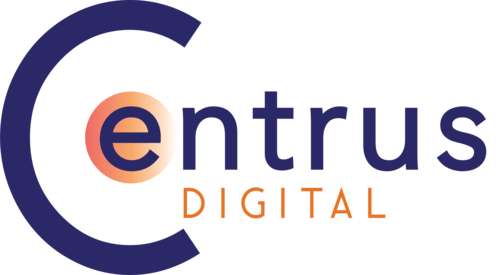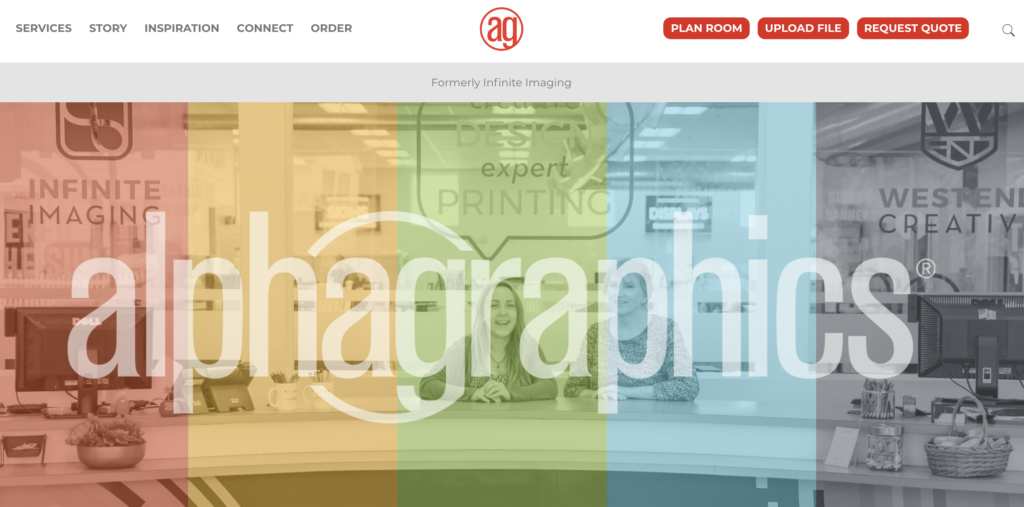 When we’re building your custom marketing strategy, sometimes it may require projects beyond our scope of expertise. We will never pretend to be experts in everything. We’ve worked with all of the partners in our Circle on many projects and know they’re the best at what they do.
When we’re building your custom marketing strategy, sometimes it may require projects beyond our scope of expertise. We will never pretend to be experts in everything. We’ve worked with all of the partners in our Circle on many projects and know they’re the best at what they do.
This new blog series highlights the businesses Centrus Digital partners with and considers part of our trusted Centrus Circle. We’re kicking off the Centrus Circle Spotlight series by interviewing Lee Germeroth, owner of Germeroth Consulting & Creative. Lee designed our website (so we know how great he is!) and talks more in our interview about his process of utilizing user information design in his website development.
Kayla: Can you tell me more about your business and when it began?
Lee: I started the company in 2016 as a consulting agency and with that comes the additional creative services I offer: photography, videography, and graphics. Creative design is a way to grow a business and strengthen your brand image. Web design, social media, email, SEO, and Google Analytics are what I like to consider the main things, the big buckets. We use what fills these buckets, these data mines, to form our “data backed decision making”. This decision making helps play into social media, email marketing, and overall website design to be effective.
Our clients’ SEO uses the data to inform and adjust what we offer. Integrated marketing programs are tightly knit, whether it’s doing website design to enhance Google Ads or social media marketing. Our biggest focus is on web design and the things that support it, because what’s the point of promoting your business if you’re only directing your customers to a subpar website?
Kayla: Is it just you working or do you have a team of freelancers you also connect with?
Lee: I work independently on website design but also partner with freelancers and other businesses like Centrus for Google Ads. I’m not a direct expert in some of the project aspects like graphic design and copywriting so that’s when I connect with other businesses. While I do have my photography business, I also have a videographer available. My expanding team is really project-based where I focus on website design, SEO, Google Analytics, and user information design.
Kayla: How long have you been working with Centrus? I don’t think I’ve heard the introduction story because I just started at Centrus in 2020.
Lee: So it’s actually kind of a funny story as to how I met up with Jon and Bob. I’m a member at COVE (Cooperative Venture Workspace) and when Centrus was still just Bob and Jon back in 2015, they had also joined COVE. I joined in 2016 at the COVE Christmas Party where there were only 4 to 5 people. Of course, Jon is always networking and chatting people up, and he brought up the DMC.
I have teaching experience, having taught and guest spoke at some college-level classes as well as internships and mentorship experiences, so Jon and I ended up keeping in touch and became friends. We worked together on the DMC and ended up trading clients back and forth. If anyone needed web design, Jon recommended me and I referred anyone that needed Google Ads back to Centrus. Technically we’re competitors, but we work more as colleagues. Anything one of us does benefits the other, and we’re really collaborative in that respect. This ends up ultimately benefiting our clients as much as possible. Neither my business nor Centrus is really territorial or ego-driven; if we can create a better end result for our clients, that’s what we want to do.
Kayla: What do you enjoy the most about what you do?
Lee: Solving problems! Discovering problems, finding creative solutions, and learning what businesses need to grow are the most enjoyable processes for me. Every business is unique, especially when you work with different clients from a variety of industries.
I went to college at a liberal arts school with a business major. Rather than learning to use business-based skills to solve business problems, I was able to use a marketing perspective for creative solutions that are effective and efficient. Coming from outside of a typical business background, it allows me to think outside of the box.
Kayla: Let’s talk more about your recent project with Portsmouth graphic design company Alphagraphics (previously Infinite Imaging). Bob was very excited to talk up your website design with them.
Lee: The website had a good base but it was horribly bloated. There were 3 times as many pages as needed saying many of the same things, becoming redundant. The pages were convoluted, navigation was incredibly confusing and overall not beneficial for the user experience. For the new site, we thought about what users need to know and how they can easily get these pieces of information, which is called informational architecture.
Kayla: Before we go deeper on your process for Alphagraphics, what do you think is key about user information design in creating a website – how do you approach it?
Lee: There are two basic ways people navigate through websites: problem-based or solution-based. Problem-based architecture is when a user knows they have a problem, but they don’t know what the solution is yet. Solution-based architecture is when they know what solution they are looking for, but they still need more information about it. Knowing these approaches to site navigation helps the design and creation of websites.
Kayla: In the case of Alphagraphics, what was your user information design strategy?
Lee: The problem-based architecture for AlphaGraphics is where the “Inspiration” tab of their website comes from, as opposed to just calling it a portfolio. Potential customers can look at the gallery of photos for examples and case studies for similar industry types where they can see their problem portrayed or identify themselves in these examples.
For their solution-based architecture, we have their service section of the site. We also provided blog posts for users to get a deeper education on their solutions. Those blogs and case studies act as organic landing pages for long-tail keyword searches to bring more users to their website. The story aspect on websites is also a huge component for any small or local business, connecting with their customers and showing why the business would be better than a big box store or online retailer.
Some other aspects of websites are the all-important Contact Us page for customers to reach out to the business, as well as an easy online ordering platform.
Kayla: Last question! What’s something you pride yourself on in working with your customers? Bob likes to call you a non-template kind of guy.
Lee: Speed, efficiency, and communication along with attention to detail. I work very quickly and efficiently without a lot of bloat, which is helpful for being a small business and a “solopreneur”. I can respond without a whole chain of command or a big team where you have to wait on other people.
I also don’t have a specific target client, enabling diversity. The basics of information architecture can work for all industries because the underlying human psychology is the same. How to help your customers solve their problems is the base of marketing and using that foundation we achieve your goals.
Kayla: So true! Thank you so much for sitting down with me and talking more about your business, Lee. You can find more information about Germeroth Consulting & Creative on their website.

